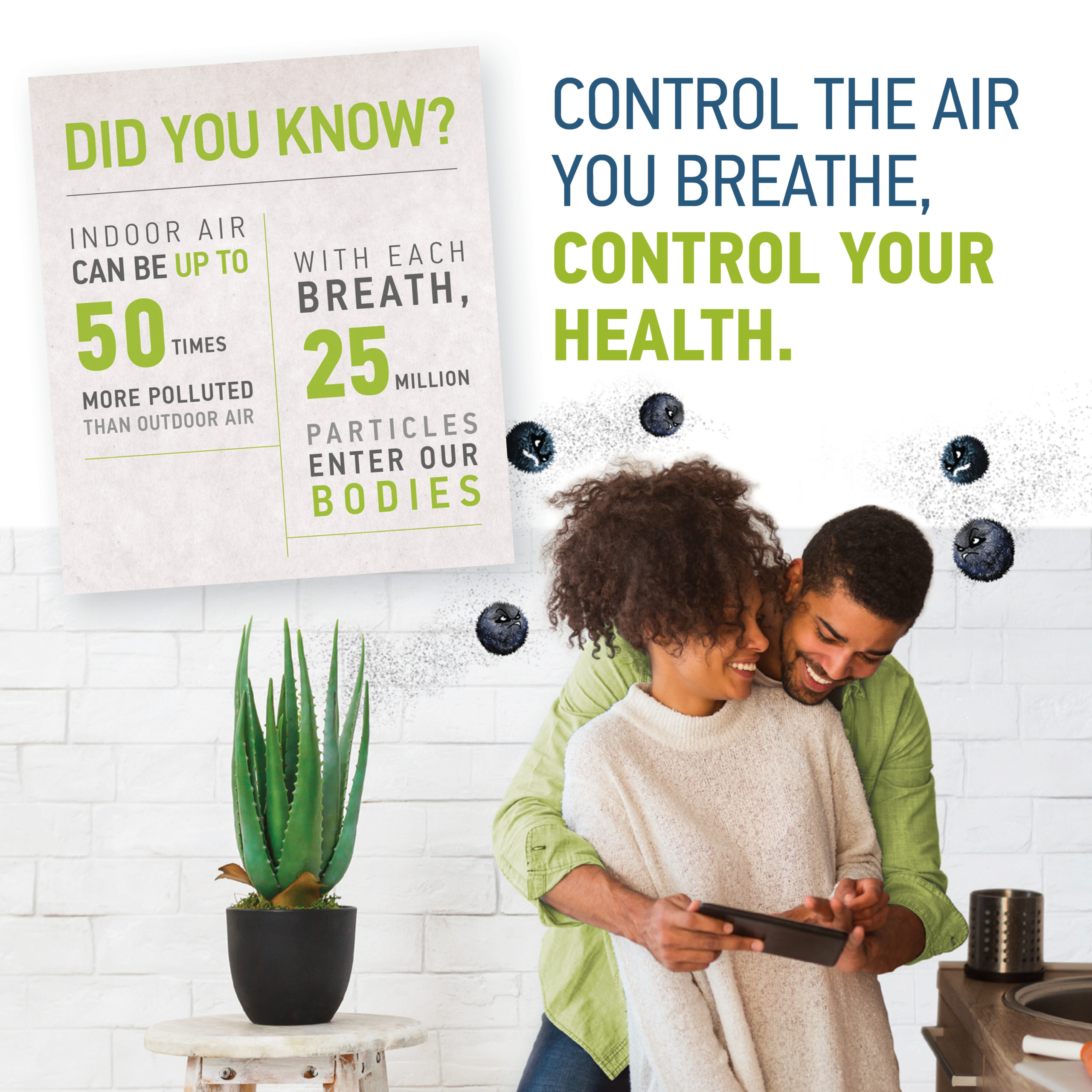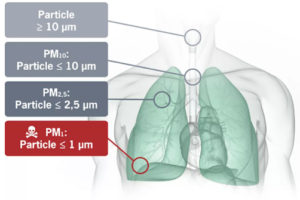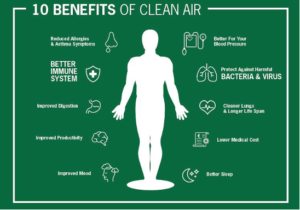
Clean air can greatly benefit our health, from improving sleep to digestion. It can mean the difference between a healthy and productive day or a visit to the hospital. Learn about modern filtration and HVAC technologies below and do more to make sure you have the best air for your health.
Did you know that we eat 2kg of food, drink 2l of water and breathe 11.000l of air each day? As we all know, air is extremely important for human survival but sometimes we forget the importance of this air being clean. In every breathe we take, there can be more than 25 million particulates that enter our bodies. With higher concentrations of particulates in the air, the risk of sickness/illness increases.
Currently, the EPA (Environmental Protection Agency) classifies six criteria for pollutants that are in the air1. These contaminants are Ozone, Particulate Matter, Sulphur Dioxide, Carbon Monoxide, Lead and Nitrogen Dioxide. Many of these contaminants are easily understood as they are a common gas or VOCs (volatile organic compounds), but Particulate Matter is something that is made up of several different pollutants. As we said, in each breath we take, there are over 25 million particles. These range in different types of particles (including pollen, dust, soot etc.) to different-sized particulates. When speaking about Particulate Matter, we talk about four key particulate ranges:
PM1 is the most important and relevant particle fraction in the filtration process to create a healthy and good indoor environment (IAQ – Indoor Air Quality), where people and processes are optimally protected. The smallest particles are the most dangerous to humans because the human body lacks sufficient protection against these extremely small and harmful particles. They enter our body through the respiratory system, we inhale them, and they end up deep in the lungs and continue flowing in the bloodstream.

Figure 1: ©Markus Koch (Camfil)
According to a report by the European Union2, indoor air can be up to 50 times more polluted than outdoor air. The reason for this increase in poor air quality is down to a number of factors:
We all understand that if we eat contaminated food or water, we are at risk of diseases, but we often don’t consider how poor air quality affects our health. Poor air quality can have detrimental impacts not only on your lung function but also on your other vital organs3. The poorer air you breathe, the greater the risk of many different diseases. But rather than focus on the effects of poor air quality on your health, maybe we should start taking the same approach as we do with our food and focus on the health benefits of breathing clean air. Clean air can have massive benefits for our health, from improving our sleep4 to improved digestion5.
In research conducted by Harvard University6, clean air was shown to improve cognitive function. In this research, it was seen that when comparing people in two different environments – one with poor air quality and one with improved air quality – it was seen that people in the building with clean air had increased cognitive performance by 61%. When they increased the air quality again to a higher level, the people were able to perform 101% higher in these cognitive tasks.

Figure 2: ©Markus Koch (Camfil)
The first step to improving your Indoor Air Quality is to look for the sources of contaminations. In most cases, outdoor air pollution can greatly contribute to poor Indoor Air Quality. To help ensure that this air quality is protected you, should follow the guidelines set out in European standards7. This standard highlights the importance of ePM1 filters in all people-occupied facilities. In your HVAC system, the air filter is the main component that needs replacing. This means upgrading your filtration solution is the easiest action as there is no need to retrofit the framework or install new systems within your facility. Often, these air filters can be upgraded without affecting the energy consumption of your HVAC system. Utilising filters with the highest energy classification8 will help ensure optimal performance while protecting the people in your facility.
___________________________________________
[1] https://www.epa.gov/criteria-air-pollutants
[2] ECA report 23 Ventilation, good indoor air quality and rationale use: https://publications.jrc.ec.europa.eu/repository/handle/JRC25406
[3] https://pubmed.ncbi.nlm.nih.gov/31285306/
[4] https://www.theguardian.com/lifeandstyle/2017/may/21/air-pollution-linked-to-poor-sleep-study-finds
[5] https://iubmb.onlinelibrary.wiley.com/doi/10.1002/iub.2530
[6] https://iopscience.iop.org/article/10.1088/1748-9326/ac1bd8
[7] For example: prEN16798-3: Energy performance of buildings – Ventilation for buildings – Part 3: For non-residential buildings – Performance requirements for ventilation and room-conditioning systems
[8] Best energy class is A+ according to the Eurovent Certification Programme